- Author Jason Gerald [email protected].
- Public 2023-12-16 10:50.
- Last modified 2025-01-23 12:04.
Want to change the boring Windows startup sound? This is easy to do in Windows XP, but not in newer versions of Windows. To be able to change the sound, you need to download a special utility. If you're a Windows 8 user, make sure you shutdown properly so you can hear the sound the next time your computer restarts.
Step
Method 1 of 4: Windows 8, 7, and Vista Startup Sound
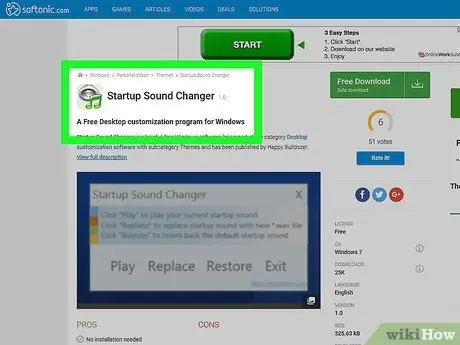
Step 1. Download the “Startup Sound Changer” program
This utility was created by Windows enthusiasts, as there is no easy way to change the normal Windows 8, 7, or Vista startup sound. You can download this utility in Winaero.
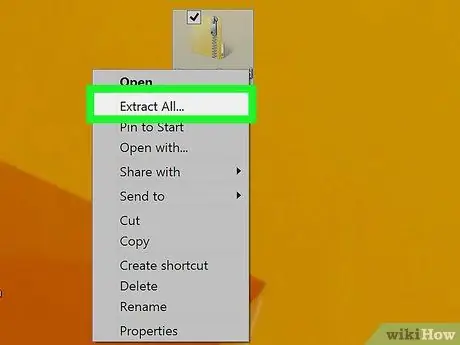
Step 2. Extract the utility
Double-click the downloaded ZIP file, then drag the StartupSoundChanger.exe file to the desktop.
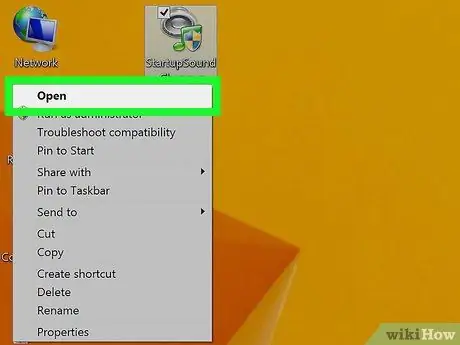
Step 3. Run the utility
A small menu with various options will appear.
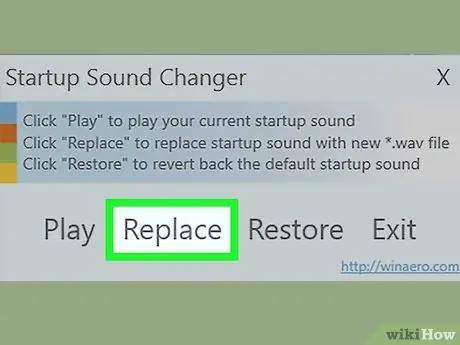
Step 4. Click “Replace” and search the computer for available replacement sounds
The sound must be in WAV format.
You can restore the original sound by running the utility and clicking “Restore”
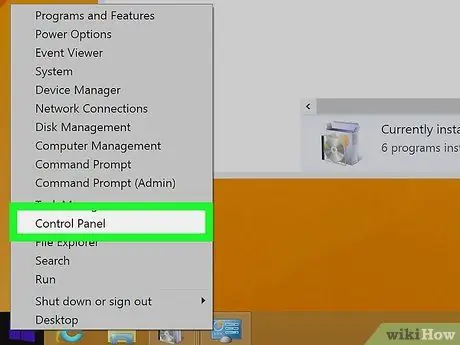
Step 5. Open Control Panel
You can search for it directly or find it in the Start menu.

Step 6. Select “Sounds” and click the tab
Sounds.
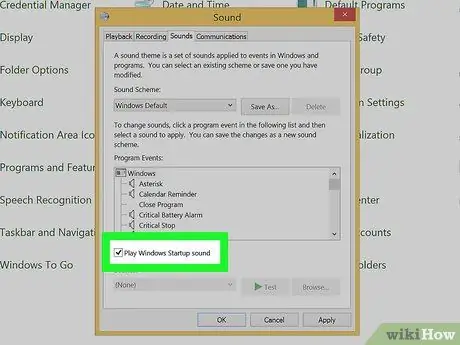
Step 7. Check the box “Play Windows Startup sound” and click
Apply.
Note: Windows 8 startup sound will not be heard until you perform a full shutdown (see next section)
Method 2 of 4: Windows 8 Logon Sound
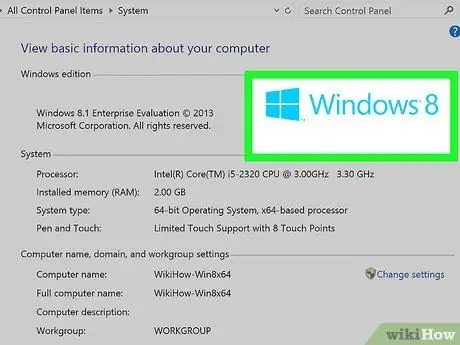
Step 1. Understand what changed in Windows 8
In order to improve the performance of Windows 8, Microsoft has made many changes to the Windows architecture. One of the trimmed down features is Windows startup and shutdown sounds. You can re-enable these sounds using the Windows Registry, but thanks to the Fast Boot feature in Windows 8, the sounds will only be heard if you perform a full manual shutdown.
Note: This method will only change the Logon sound

Step 2. Open the Windows Registry Editor
You can do this by pressing Win key and typing regedit.
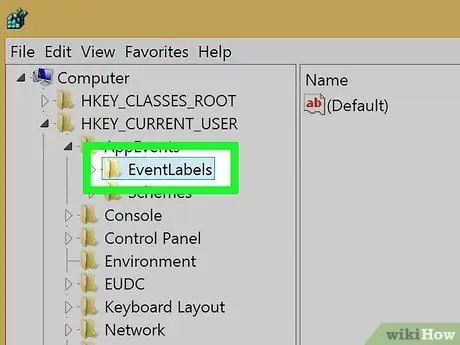
Step 3. Use the directory tree on the left to navigate to
HKEY_CURRENT_USER → AppEvents → EventLabels.
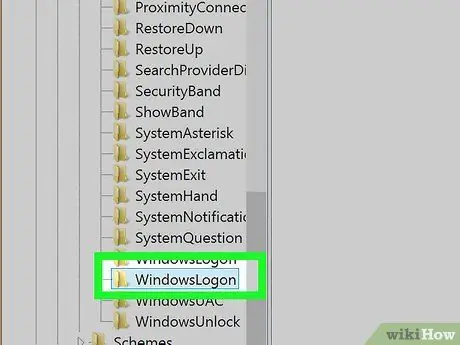
Step 4. Locate and open the
WindowsLogon.
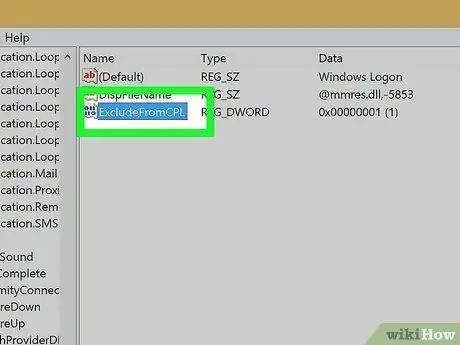
Step 5. Double click registry
excludeFromCPL.

Step 6. Change the value of
1 Becomes 0.
Click OK.
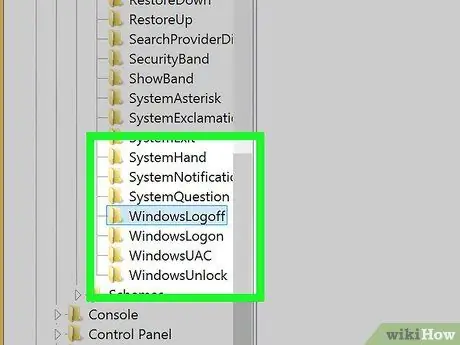
Step 7. Repeat the steps above to activate various other sounds you want
This also applies to WindowsLogoff and SystemExit.
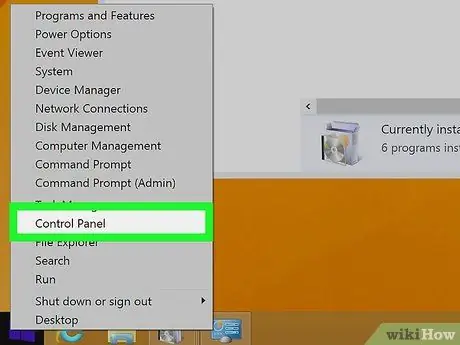
Step 8. Open Control Panel
You can search for it directly or press Win+X and select it in the menu.
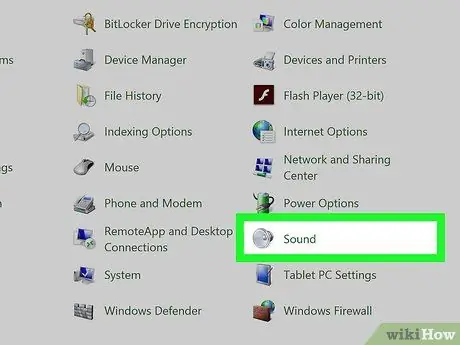
Step 9. Select the “Sounds” option and click the tab
Sounds.
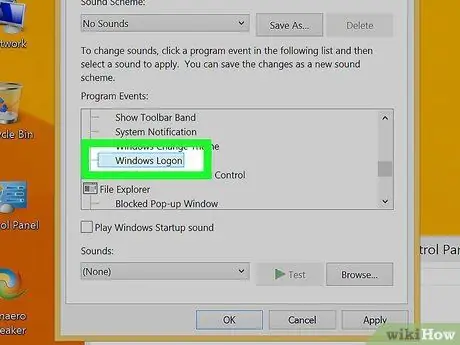
Step 10. Scroll down and select the “Windows Logon” entry
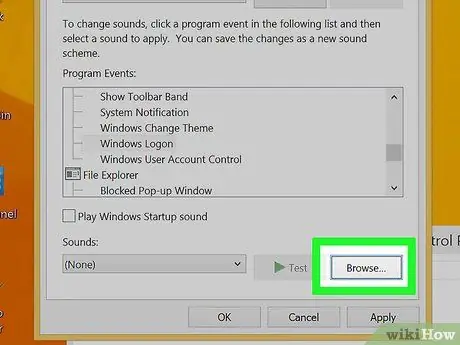
Step 11. Click
Browse… to search for available replacement sounds on your computer.
The sound must be in WAV format.

Step 12. Perform a full shutdown
In order for the logon sound to be heard, the computer must boot up from a full shutdown state. A normal shutdown will actually cause the computer to do a Fast Boot, and skip the sound activation process.
- Press Win+X
- Select "Shut down or sign out" → "Shut down"
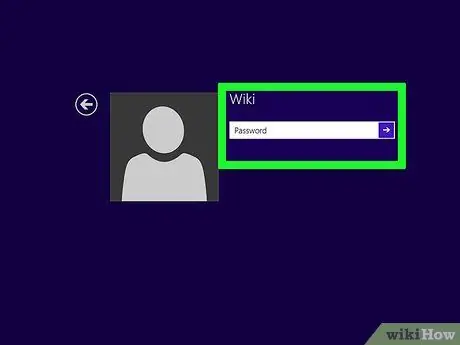
Step 13. Boot up your computer
You will hear a new logon sound as soon as your computer boots into Windows.
Method 3 of 4: Windows XP Startup Sound

Step 1. Click the Start menu and select "Control Panel"
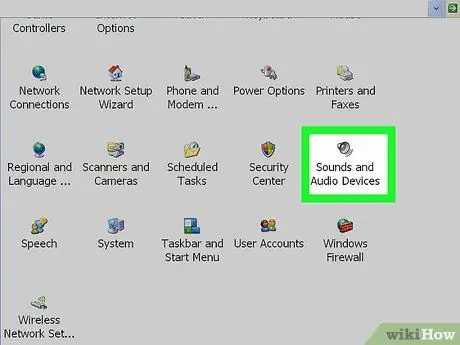
Step 2. Open "Sounds and Audio Devices"
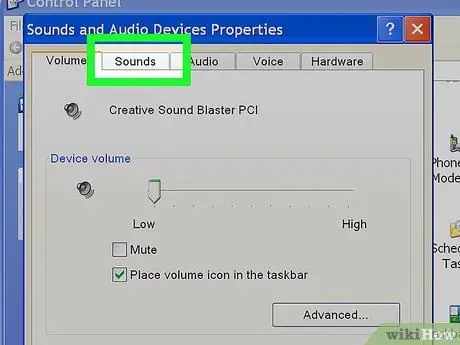
Step 3. Click the "Sounds" tab

Step 4. Scroll down and select the “Start Windows” entry
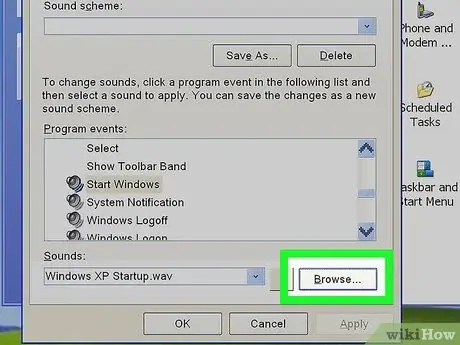
Step 5. Click the “Browse” button to search for available replacement sounds on your computer
The sound must be in WAV format.
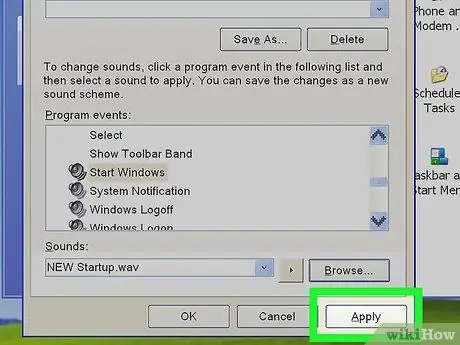
Step 6. Click “Apply” to save your changes
Method 4 of 4: Adding Custom Startup Sound on Windows 8 & 10 (Alternative Method)
- This method has been tested to work well on Windows 8 & 10. If you have PowerShell and Task Scheduler, but are not using Windows 8 or 10, this method can also be used.
- To enable this sound, fast boot must be disabled.
Step 1. Open Task Scheduler by going to the Search menu and typing "taskschd.msc" without the quotes
When the search results related to “schedule and manage tasks” appear, right click then run the program as admin.
Step 2. Open the Task Scheduler Library or its subdirectories in the bar on the left
Step 3. Select "Create Task" on the right sidebar after selecting Task Scheduler Library
Step 4. Specify a name corresponding to "Windows Start-Up Sound" in the new task window
Step 5. Select "Change User and Group" then type in the username "SYSTEM"
That way, the system software can set it up automatically without you having to log in. Click Alt+C to verify that you have typed correctly. If correct, what you type will be accompanied by an underscore. Click "OK" to close the window and save these changes.
Step 6. Select "Hidden" which is on the left side of the "Configure for" menu
Step 7. Open the Triggers menu
In this menu, you can specify when the task will start. In this case, when the system starts (startup).
Step 8. Select "New
.. (or Alt+N). After that, a new settings window will appear.
Step 9. Select "At Startup" on the menu that appears in that window
Step 10. Press the "OK" button on the window to close and save the changes you made
Step 11. Open the "Actions" panel
This is where the magic happens. The startup sound will be played.
Step 12. Open a new action by pressing "New
.." on the screen or Alt+N on the keyboard to open the "New Action" window.
Step 13. Make sure this action is set to start the program on the menu
Step 14. Type "PowerShell" into the Program/Script box
After that, "PowerShell" will open in the background and play a startup sound when the task is run.
Step 15. Type:
-c (New-Object Media. SoundPlayer 'C:\Windows\Media\Windows Start.wav'). PlaySync(); in the text box next to "Add Arguments (optional)".
- Change "C:\Windows\Media\Windows Start.wav" to your audio file directory. Do not add extra spaces other than the path to the file.
- The audio file must be in WAV format. If you don't have a WAV file, look for an online conversion tool that will help you convert your file to WAV.
Step 16. Click "OK" to save changes and open the "Conditions" panel
You have to disable some settings for this sound to play properly.
Step 17. Disable "Start the task only if the computer is on AC power
- That way, you can hear the startup sound whether or not the PC is charging.
- This setting will also disable "Stop if the computer switches to battery power".
Step 18. Select the "Settings" pane of the "Create Task" window
Step 19. Enable "Run task as soon as possible after a scheduled start is missed"
This setting will reduce the chance that you won't hear any startup sounds, unless your computer's drive card is disabled or you're in safe mode.
Step 20. Finally, save the changes you made by clicking "OK" in the "Create Task" window
Step 21. Make sure the status of the task you just created is "Ready" with a trigger on system startup to test everything is correct
To test further, select the task then press "Run" on the right sidebar. If you hear something, you've set it up correctly. In addition, you can also test whether the startup sound is successfully set as you want by restarting the computer.






